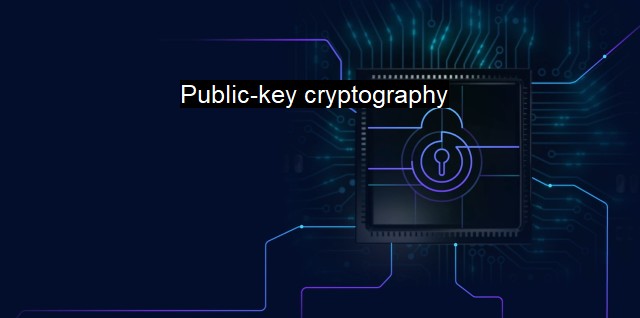What is Public-key cryptography?
Public-Key Cryptography: A Modern Solution for Safe and Secure Communication Online
Public-key cryptography, also known as asymmetric cryptography, is a system of encryption that uses a pair of keys for secure communication – a public key, which is made freely available to anyone, and a private key, which is kept a secret by the possessor. it holds significant value as it creates a secure environment for the transfer of sensitive information across insecure networks like the internet.Public-key cryptography's primary function is to confirm the entity with which an individual is communicating. Two distinct keys have benefitted from securing the messages. One is for decoding or encrypting the communications, and the other is for decoding or decrypting them. One of these keys can be made public – hence the term public-key - while the other must be kept private.
The choosing and distributing of these cryptographic keys operate in a way that makes it computationally infeasible to derive the private key from the public key and allows its public availability without compromising security. If one key encrypts a file, only the other corresponding key can decrypt it. It means that if the public key does encryption, then the private key does decryption, and vice versa.
The phenomenon of public-key cryptography can be imagined as an individual using an accessible lock, but only they have the key. Because the public key (the lock) is available to anyone to use and have access to, it means that anyone can encrypt (lock) a message intended for the key’s owner. Only the owner has the ability to unlock these messages with their unique private key, ensuring that the information is accessible solely to them.
Cybersecurity can significantly benefit from secure algorithms of public-key cryptography. In particular, it is highly effective against Man-In-The-Middle (MITM) attacks where an unauthorized person intercepts communication between two entities and attempts to mimic both ends of the communication, deceiving the initial senders and receivers. Authorization and authentication properties of the public key prevent the attacker’s stealthy advances by providing cryptographic proof.
Public-key cryptography forms the backbone of Secure Sockets Layer (SSL) and Transport Layer Security (TLS), which are two protocols used to encrypt the connection between a user and a server for secure communication over the internet.
Protocols on this premise are of specific importance in antivirus and malware detection. Suppose an antivirus system uses public-key encryption to protect a machine’s sensitive information (like passwords, credit card information, etc.). In that case, even if a malicious virus or spyware is to infiltrate the system, the encrypted information would be unreadable and, therefore, useless. Pairing this with the fact that said information can only be decrypted on the machine’s selected endpoints means the attacker has to infiltrate both the transmission and destination nodes to get the value out of attacking that particular machine.
Public-key cryptography is paramount as it provides secure environments facilitating better privacy, integrity, and authentication. It encourages vital security concepts, protects against common malicious network activities, and severe threats a system can encounter. It deals with multiple levels of digital and data security. Hence, it enhances user security and trust on the internet, making it a crucial cornerstone of major components of today's digital transactions, security agreements, and online communication protocols. With new cyber threats regularly evolving, the importance of public-key cryptography continues to grow in addressing these challenges productively.

Public-key cryptography FAQs
What is public-key cryptography?
Public-key cryptography is an encryption method that involves the use of two keys: a public key and a private key. The public key is widely available and can be shared with anyone, while the private key is kept secret and only known to the owner of the key pair. It is also known as asymmetric cryptography.How does public-key cryptography work in cybersecurity?
In cybersecurity, public-key cryptography is used to secure communications and prevent unauthorized access to confidential data. This is done by encrypting the data with the recipient's public key, which can only be decrypted with the corresponding private key. This ensures that only the intended recipient can access the information.What are the advantages of public-key cryptography?
Public-key cryptography has several advantages over traditional symmetric cryptography. First, it eliminates the need for a secure channel to exchange keys, as the public keys can be distributed openly. Second, it enables secure communication between parties who have never met and have no pre-existing relationship. Third, it enables digital signature verification to authenticate the sender and ensure the integrity of the message.How does public-key cryptography relate to antivirus software?
Public-key cryptography is not directly related to antivirus software, but it is often used in conjunction with other security technologies to protect against malware and other cyber threats. For example, digital signatures can be used to ensure that antivirus updates come from a trusted source and have not been tampered with. Additionally, encrypted communications can prevent malware from stealing sensitive data or communicating with its command and control servers.| | A | | | B | | | C | | | D | | | E | | | F | | | G | | | H | | | I | | | J | | | K | | | L | | | M | |
| | N | | | O | | | P | | | Q | | | R | | | S | | | T | | | U | | | V | | | W | | | X | | | Y | | | Z | |
| | 1 | | | 2 | | | 3 | | | 4 | | | 7 | | | 8 | | |||||||